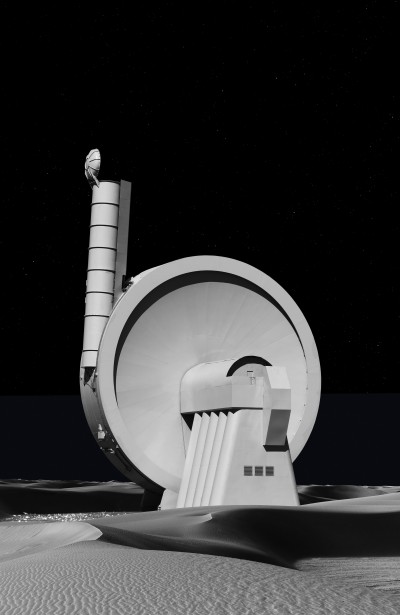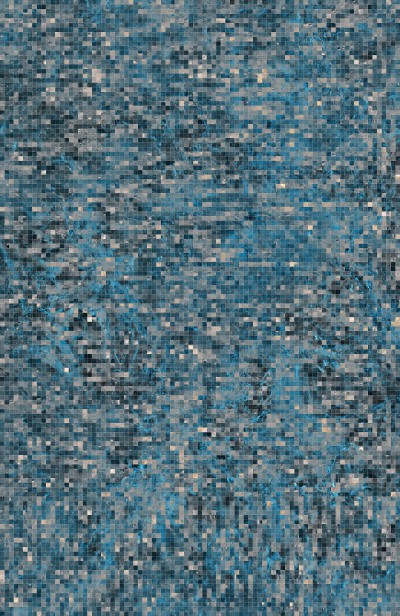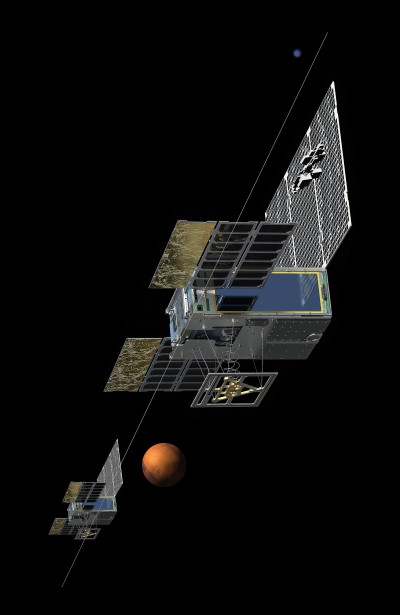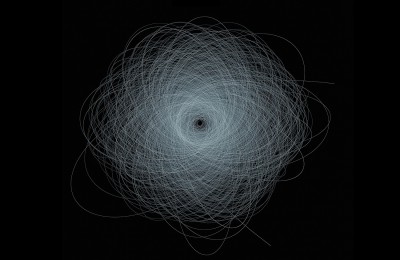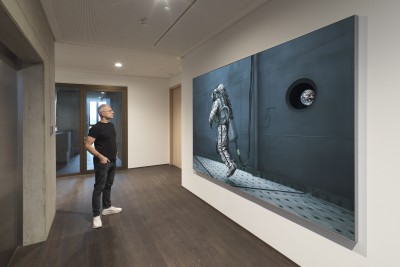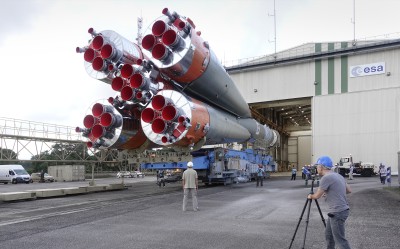
orbital spy
Format 1: 132 x 202 cm / 52 x 79.5 in, edition of 6 + 2 AP
Format 2: 67 x 102 cm / 26.3 x 40.2 in, edition of 6 + 2 AP
Hybrid photography, archival pigment print, aludibond, diasec, custom-made aluminium frame
The U.S. Department of Defense's Defense Advanced Research Projects Agency, DARPA, is working on plans for a novel telescope technology. The development program Membrane Optical Imager for Real-Time Exploitation (MOIRE) aims at replacing conventional glass optics with lightweight polymer membranes that will pave the way for a foldable plastic orbital telescope. Such a revolutionary high-resolution space telescope will be placed in geostationary orbit (at an altitude of 36,000 km) to conduct high resolution photographic and video surveillance of the surface of the Earth in real-time. The optical plastic membranes will be mounted on thin aluminum panels that unfold in space like origami works to form a telescope of over 20 m in diameter. The polymer lenses will transmit light to the sensors of a facing satellite which generates images and video. From its position in geostationary orbit, the telescope will be capable of scanning about 40 percent of the Earth’s surface at a resolution of one meter.
The artwork "orbital spy" visualizes this futuristic space technology. Based on what little information is now available on the Internet, a 3D model of the telescope was rendered and combined with an Earth view. This technology will not only revolutionize the way images are captured but will also prove a watershed in terms of the capability of military and state-controlled surveillance to monitor the planet and the people who live on it.

